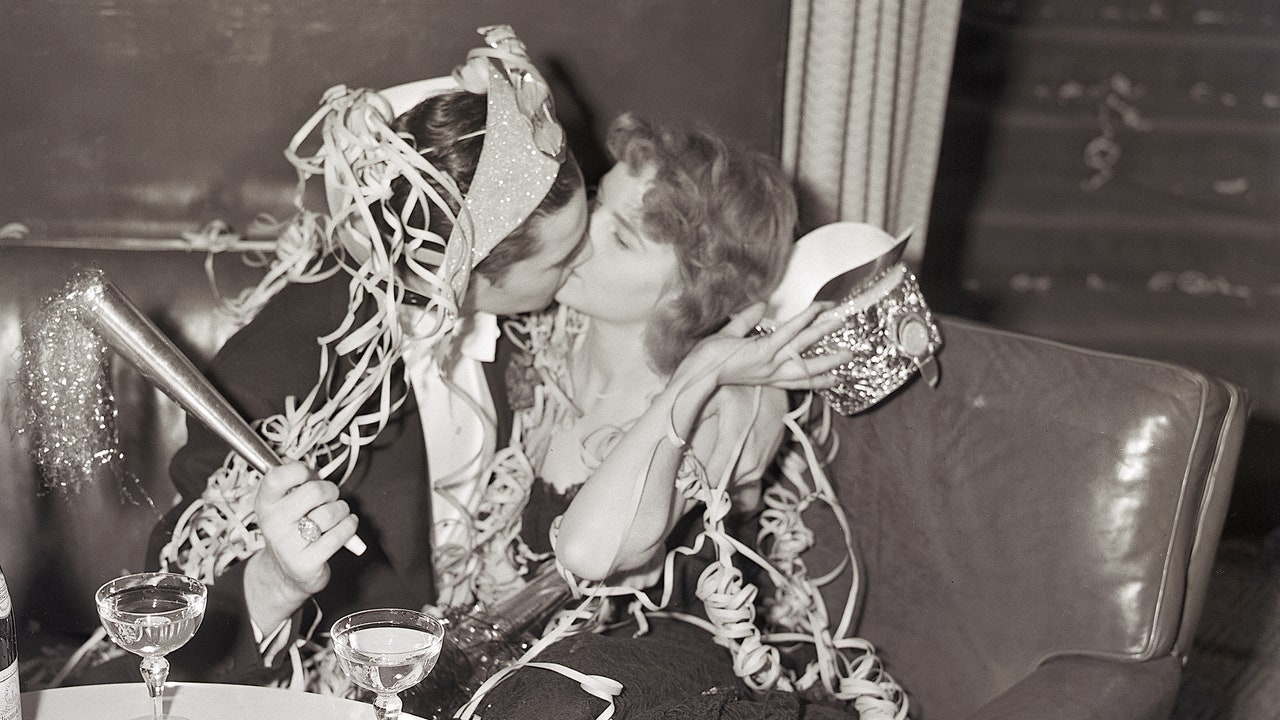Out of all the holiday traditions, the New Year’s kiss might be the most fun—or fraught, depending who you ask. If you’re coupled, you probably haven’t given it much thought. But if you’re single, the prospect of finding someone to kiss at midnight might bring up panic, excitement, or dread. Most likely, a combination of all three.
But your New Year’s kiss need not be so dramatic—especially, once you consider its true meaning and origins. Whether you’re looking to spark some romance under buckets of confetti, or are simply spending the night in with your other half, here is a look at how everyone’s favorite—or not-so-favorite—New Year’s Eve tradition came to be, along with tips for making the most of it.
What is the origin of the New Year’s kiss?
The saucy tradition of starting the New Year with a smooch can be traced back to the winter solstice festival Saturnalia. In ancient Rome, Saturnalia was a mid-December pagan festival that honored Saturn, the agricultural god. This celebration included decorating homes with greenery, like wreaths, grand feasts, gift-giving, and socializing with friends and family. Sound familiar?
That said, Saturnalia wasn’t totally innocent. It also included the relaxing of societal norms, a public sacrifice, and non-stop partying. “For many, it involved a few too many alcoholic beverages,” explains etiquette expert Jo Hayes. “The common consequences of said indulgence? A fair amount of PDA—including kissing.”
Eventually, Saturnalia merged with the 12-day-long Christian celebrations of Christmas, which traditionally stretched past the New Year. However, the vibe didn’t get any tamer—in fact, in medieval times, the season was believed to have been nearly as wild as it was during pagan times, with plenty of public intoxication and frivolity. “In medieval Europe, the kissing tradition evolved out of masquerade balls where midnight unmaskings were punctuated by a kiss to cleanse and thereby secure a year of good fortune,” explains historian Ralph E. Long of Academized. “The kiss had become a means of protecting from loneliness or tragedy, and guaranteeing a new beginning in love and intimacy.”
Another festival, Hogmanay, which is still celebrated today, is the Scottish equivalent of a New Year’s celebration, complete with socializing, dancing, and singing “Auld Lang Syne” (written by Scottish author Robert Burns). The celebration would have people wishing one another a “Guid New Year” with warmth and kisses to lovers, friends, and strangers alike to embrace new beginnings.
Read the full article here




